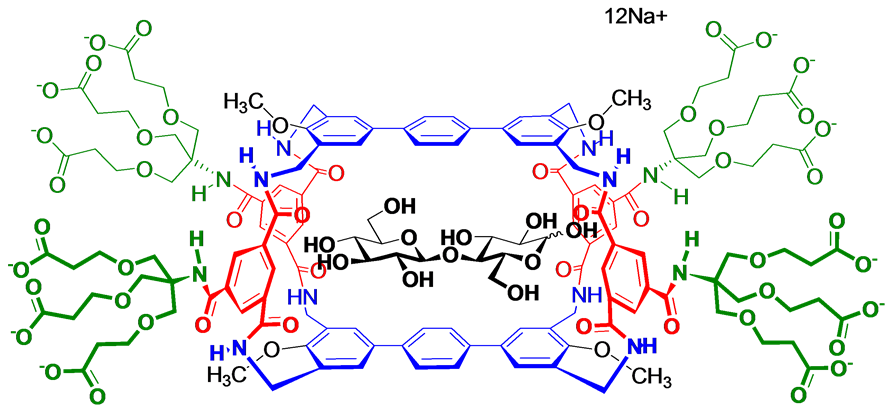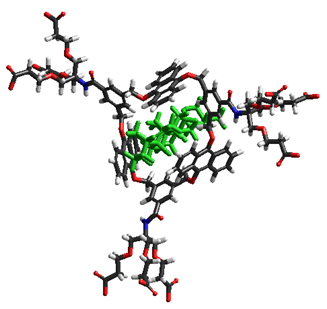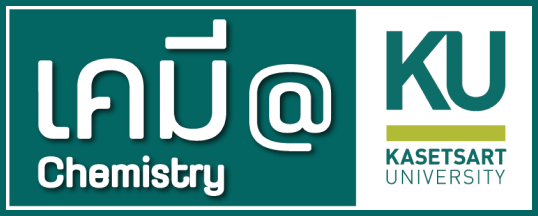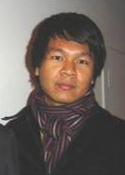วุฒิการศึกษา
- B.Sc. (Chemistry) 1st class honour, Kasetsart University, Thailand (2001-2005)
- Ph.D. (Supramolecular and Organic Chemistry), University of Bristol, the U.K. (2006-2010)
- Visiting researcher at the Department of Pure and Applied Chemistry, University of Strathclyde, the U.K. (October 2003)
งานวิจัย
To understanding biological processes such as infection, fertilization, recognition, etc., mechanistic investigation in host-guest complexes is an ideal key. Because natural hosts, which are mostly protein domains, are hideously complicated and the natural media, water, is very polar, synthetic receptors are needed. These artificial hosts of our interests are mainly biomimetic so as to complementarily encapsulate the study guest molecule(s). Binding mechanisms of these systems can be investigated by means of spectroscopic methods (NMR, UV, Fluorescence techniques) along with their thermodynamic data obtained by ITC. The binding mechanistic knowledge performs a crucial tool to the drug design and the development of the medical treatment. The topics of interest currently are Artificial Enzymes and Biomimetic Receptors for the recognition of Carbohydrates, Cholesterols, and Nucleosides.
Carbohydrate Recognition : A Tricyclic Synthetic Lectin for Cellobiose Recognition in water.
This work is based on Supramolecular Chemistry, and employs the idea of “Lock and Key” theory. We have designed the Temple receptor with hydrophobic patches (blue parts) and hydrophilic amide spacers (red parts) to selectively interact with CH-faces and hydroxyl arrays of carbohydrate moiety, respectively.
Our work shows the highest binding constant of around 3,300 M-1 in water for D-cellobiose (black structure) by sodium tetramethoxy-para-terphenyl-based macrotricyclic dodeca-carboxylate salt by means of 1H NMR, fluorescence, and ITC titrations.
The aim of this project is to create a carbohydrate sensing unit and study the binding mechanism of carbohydrates and an extended “Temple Receptor”, which was designed to encapsulate all-equatorial disaccharide in water.

Cholesterol Recognition : A Biomimetic Receptor for Cholesterol Recognition
This work is also based on Supramolecular Chemistry, and employs the idea of “Lock and Key” theory. We have designed a D3h-symmetrical biomimetic receptor with hydrophobic patches (blue parts) and ether spacers (red parts) to encapsulate cholesterol moiety by intimating the associating patterns of certain enzyme binding pockets.
This project is in the stage of synthesis.
The aim of this project is to create a new colourful framework of cholesterol receptor (sensing unit) which will be developed to a cholesterol-transformation cage in water.

ผลงานวิจัย
- Sookcharoenpinyo, B., E. Klein, C. Ke, A.P. Davis. 2013. “Nucleoside Recognition by Oligophenyl-based Synthetic Lectins”Supramol. Chem. 25(9-11): 650-655.
- B. Sookcharoenpinyo, E. Klein, Y. Ferrand, B. D. Walker, P. Brotherhood, K. Chenfeng, M. P. Crump, A. P. Davis: A Cellobiose-specific Synthetic Lectin in Water, Angew. Chem. Int. Ed. 2011, in press.
International Conference
- “A Cellobiose-specific Synthetic Lectin in Water”, B. Sookcharoenpinyo, A. P. Davis. Southampton Supramolecular Chemistry Symposium SSCS-7, University of Southampton, the U.K., 16 July 2010.
ผลงานแต่งเรียบเรียง ตำรา หนังสือ
- บุญฤทธิ์ สุขเจริญภิญโญ. 2557. “คาร์โบไฮเดรต”, บทที่ 13, หน้า 111-118. ใน ธีระชาติ ลี้ประเสริฐ (บรรณาธิการ).ปฏิบัติการเคมีอินทรีย์. พิมพ์ครั้งที่ 3 (ฉบับปรับปรุงใหม่)กรุงเทพมหานคร: โรงพิมพ์ โอ. เอส. พริ้นติ้ง เฮ้าส์.120 หน้า.

